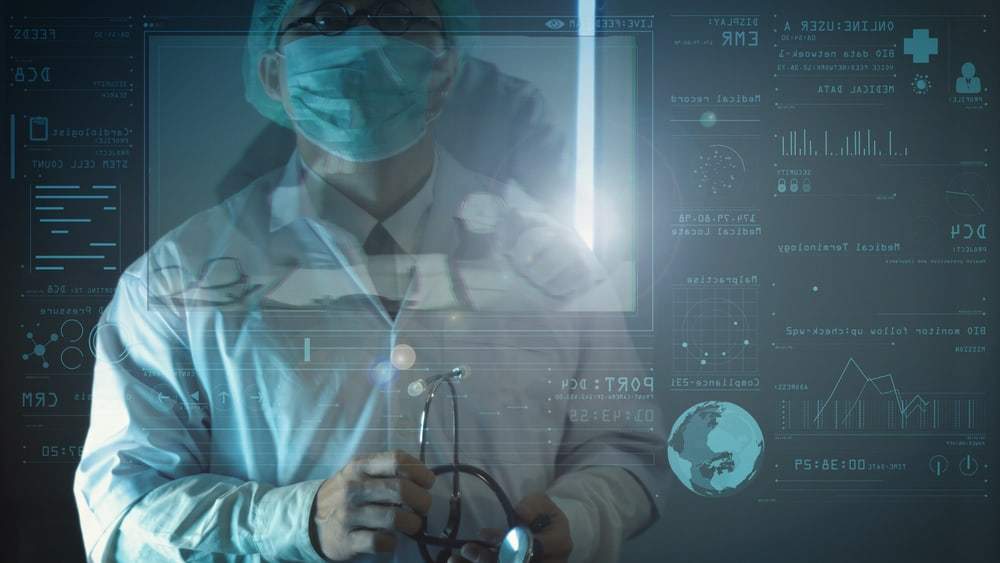If healthcare were like popular music, most current EMR implementations could be compared to Top 40 radio, they focus on nothing but the latest hits. And while the hits may be fine for music, clinicians need more than the ‘hits’ to fully understand and diagnose their patients. To take the analogy further, clinicians need the entire back catalogue of albums to get a 360-degree patient view — which can be a challenge in today’s electronic medical record environment.
As clinicians and surgeons are acutely aware, a patient’s medical records are likely strewn across multiple, often siloed, information technology systems. Some may be tied to the EMR in a tangential way, but accessing these records requires remembering additional passwords and often multiple technology integrations that must be designed and maintained. Often, however, critical information is stored in legacy systems and can only be accessed from a particular computer in a particular location, adding time and frustration to the diagnostic process.
Adopting an independent clinical archive (ICA) brings that disparate information into one central repository, translated into a healthcare data standards-based format to give clinicians a clearer, more comprehensive patient record while still using the same workflows. Think about how you used to organise your music in a record case or a CD rack. Now you likely store your music on your phone on your computer or another electronic storage medium. It’s all there, in the right format, ready for you to enjoy the hits, the whole album, your favorite playlist and everything in between.
Properly implemented, an ICA can bring that level of clarity to patient records. And this doesn’t mean information overload – an ICA offers ways to help clinicians quickly and easily filter the information they require.
EMR + ICA = a complete patient record
Today’s patients are likely to be older and suffer from one or more chronic conditions that can delay or confuse the time-honored diagnostic tradition of the patient history. The percentage of cases that can be accurately diagnosed through history alone varies but is often higher than 70%, which emphasises its importance.
Statistics compiled by the Centers for Disease Control and Prevention show medical spending for people with at least one chronic condition accounted for 86% of all healthcare spending in 2010. About half (117 million) people suffer from at least one chronic condition and 25% suffer from two or more, according to statistics from 2012.
What year did you have that surgery, diagnostic test or procedure? We are continually bombarded by increasing amounts of information, which can muddy the particulars of any issue. Add aging minds, multiple co-morbidities and clinician time pressures into the mix, and you begin to understand the difficulties that clinicians face when taking or confirming patient history.
Most health systems are using at least their second EMR system. Not all relevant patient information gets transferred from the old system to the new, creating gaps in the patient record. Accountable care organisations, care collaboration, seamless transitions and value-based care are a few of the current priorities in healthcare, moving the patient from physician to specialist to imaging center and lab to hospital to post-acute care and home. Think about your EMRs and other medical records systems, combined with those of the other healthcare professionals your patients visit. Compound this with the current trend of hospitals acquiring ambulatory physician practices with disparate healthcare data formats. How can you coordinate care with other providers when you can’t even reference the complete patient information within your own record management systems?
Missing data compromises patient care
Depending on the health system and the IT vendor, 50% or less of data transfers during the implementation of a new EMR. How many patients continue to deal with chronic conditions they’ve had for two years, five years, 10 or more? To truly understand a patient, clinicians need the information stored in the former EMR and the rarely used but still maintained legacy systems.
The primary challenge of multiple EMRs, argue authors in Applied Clinical Informatics, is mitigating patient safety risk. Other challenges mentioned include ability to view patient records, user ability to manage multiple EMRs and workflows and institutional costs.
“The greatest risk of multiple EMR use is the risk of missing data and any corresponding decision support that impact patient safety,” the authors state. “Some of the features of EMRs that are cited as making care safer, such as improving communication, providing access to patient information, and stopping mistakes at the ordering process may be more difficult to achieve if more than one EMR is used without appropriate integration. A secondary but significant risk encompasses increased practitioner time requirement for both patient care and for training which results in loss of income and in provider dissatisfaction with the EMR.”
One repository, common format
Care coordination and continued technology evolution are behind the push for a single patient record. The challenge is bringing together data from disparate systems to create a patient summary that’s actionable for clinicians at the point of care.
Tying systems together through application program interfaces (APIs) is one solution, although it doesn’t solve the issues of data security, data integration and the need to maintain them alongside technology refreshes. This is where the independent clinical archive comes into play.
Returning to the music analogy, many of your data systems don’t speak the same language. It’s like trying to play a CD on a turntable designed for vinyl. You may also have cassette tapes, reel-to-reel and even 8-track tapes. If you could convert all your music—regardless of source—into a common format such as an MP3 file, you could listen to whatever you want.
Similarly, many medical records systems don’t share a format. So, the question becomes how to convert data from different systems into a common format that can be accessed at the point of diagnosis and care.
A centralised, standards-based data repository like an ICA can consume data such as DICOM images, HL7 broadcasts, CDA documents and other unstructured data types, store it in a common format and present findings as part of the patient record. This information is then available to clinicians as part of their natural workflows. They don’t have to log into multiple systems, transfer data between screens or use that solitary computer in the corner to access that old, but still useful, database. In fact, a health system can retire those legacy systems, saving money on maintenance, training and data storage.
Despite the continued march of technology into healthcare, referenceable patient information remains the diagnostic gold standard—the gold record, if you will—of the care process. Giving clinicians the information they need, regardless of source, can help them understand their patients more fully and bring better diagnoses and outcomes.
Need expert help finding the right Electronic Medical Records software?
We’ve partnered with the software comparison portal Crozdesk.com to help you find the right solution. Crozdesk’s Electronic Medical Records software advisors can give you independent advice and shortlist software products that best fit your specific needs. Our partnership gives you free access to their tailored software selection advice and community negotiated discounts, taking the hassle out of the research process.
It takes just a minute to submit your requirements and they will give you a call at no cost or commitment. You’ll get custom product shortlists covering the top solutions that best fit your specific needs from their team of software experts (via phone or email) and they can even connect you to your choice of the selected vendors. To get started, please submit the form below:
Jamie Clifton
Jamie Clifton VP of Product Management & Solutions at BridgeHead Software, a pioneer in healthcare data management, trusted by over 1,200 hospitals worldwide.


2 comments
Geoffrey Barnes
May 2, 2018 at 5:10 pm
Great post Jamie,
I enjoyed reading your article about the chord stroked by central data repository with clinicians and I find it insightful and a great read.
Anyways, great blog.
Ifty Ahmed
February 13, 2019 at 4:35 pm
A really good article highlighting the challenges associated with generating a more holistic view of a patient based on historical data. Inevitably, it will be some time before EMRs are ‘joined up’ to offer a more complete and meaningful picture of the patient.
However, I think the equation ‘EMR + ICA = a complete patient record’ would be better presented as ‘EMR + ICA + PHR = a complete patient record’ – where PHR is a personal health record. There is much value that can be gained by leveraging information from patients who are recording information about themselves outside of a clinical setting, i.e. maintaining a PHR. Information that could help deliver a faster diagnosis and help clinicians offer more effective treatment options whilst also helping patients take more control over their own health management.